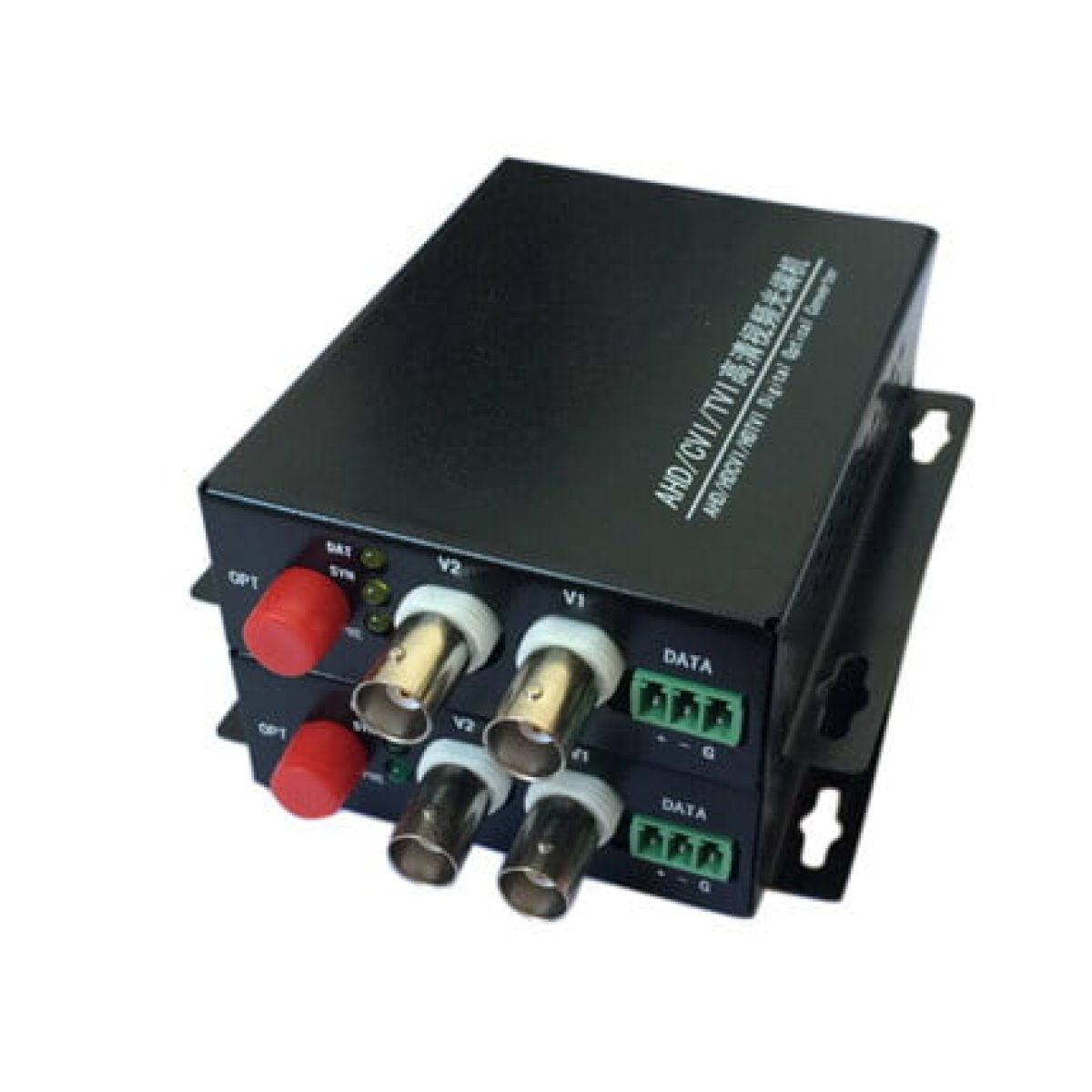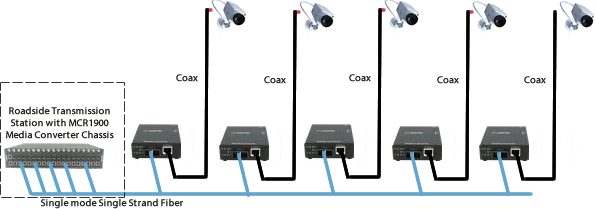How CCTV Cameras With Fiber Optic Outcome Boost Long-Distance Tracking
CCTV electronic cameras equipped with fiber optic output stand for a considerable improvement in long-distance security modern technology, supplying unparalleled advantages over traditional systems. By leveraging the buildings of light transmission through fiber optics, these electronic cameras guarantee high-definition video high quality continues to be undamaged throughout substantial ranges while efficiently minimizing electromagnetic disturbance. This development not only boosts picture clarity yet also simplifies installation processes and resource appropriation. As we check out the ramifications of this technology, one have to take into consideration exactly how these developments are reshaping the landscape of safety and security and monitoring systems in different applications.

Recognizing Fiber Optic Technology
Fiber optic technology is significantly utilized in long-distance tracking applications because of its exceptional capacity for data transmission. This modern technology employs slim strands of glass or plastic fibers to send information as light signals, significantly reducing the depletion commonly associated with typical copper cables. The inherent buildings of optical fiber permit the transmission of big quantities of data over significant distances without loss of top quality, making it a perfect choice for applications requiring dependable interaction.
The concept of overall inner reflection assists in the effective transmission of light within the fiber, guaranteeing high transmission capacity and rate. Unlike electrical signals in steel cords, fiber optics are immune to electro-magnetic interference, boosting the integrity of information transmission. This characteristic is especially important in settings with high levels of electrical noise, such as industrial setups or urban areas.
Furthermore, fiber optic cords are lighter and a lot more adaptable than their copper equivalents, which streamlines installation and minimizes structural lots. With their resilience and resistance to environmental variables, fiber optics are appropriate for outdoor applications, thus prolonging the reach of checking systems. Because of this, fiber optic modern technology is ending up being a keystone in contemporary monitoring services, efficiently dealing with the obstacles of long-distance surveillance.
Advantages of Fiber Optic CCTV
Using fiber optic modern technology in CCTV systems offers countless benefits that boost surveillance abilities. One of the primary advantages is the capability to transfer high-definition video clip over long distances without significant signal deterioration. Unlike typical copper cords, fiber optics can preserve video high quality over extensive runs, making them perfect for huge residential or commercial properties or remote tracking areas.
Additionally, fiber optic wires are much less at risk to electro-magnetic disturbance, which can distort signals in conventional systems. This makes certain more clear photos and nonstop solution, important for protection monitoring. Moreover, fiber optics are inherently a lot more secure, as obstructing signals requires specific equipment, thus supplying an extra layer of defense against unauthorized accessibility.
The lightweight and small nature of fiber optic cords additionally streamlines setup, making it possible for much easier routing via tight areas and decreasing general labor expenses. Their toughness makes them resistant to ecological factors such as moisture and temperature changes, extending the life expectancy of the monitoring system.
Last but not least, fiber optic systems can support a better number of cams on a single network, optimizing sources and supplying scalability for future expansion. These benefits make fiber optic CCTV systems a remarkable selection for modern-day surveillance requirements.
Comparison With Traditional Systems
When comparing CCTV systems, typical setups usually fall brief in numerous vital locations, specifically in terms of range and signal integrity. Standard coaxial wire systems typically encounter considerable signal deterioration over long ranges, restricting reliable monitoring varies to roughly 300 feet (cctv fibre optic cable). Beyond this limit, picture clearness diminishes, leading to potential unseen areas and lowered surveillance efficiency
In contrast, fiber optic systems preserve signal stability over a lot greater ranges, usually exceeding numerous miles without loss of high quality. This is mostly because of their capability to transfer data as light signals, which are much less at risk to electromagnetic disturbance than electrical signals used in traditional systems.
Furthermore, conventional systems need more comprehensive maintenance and troubleshooting due to their vulnerability to ecological factors such as dampness and electromagnetic noise. Fiber optic systems, discover this on the other hand, deal enhanced longevity and reduced maintenance costs, as they are less vulnerable to damage.
Applications in Long-Distance Monitoring
The advantages of contemporary CCTV systems in preserving signal honesty over fars away open up a vast array of blog applications for long-distance monitoring. One substantial application remains in metropolitan surveillance, where municipalities deploy fiber optic CCTV systems to keep track of public areas, boosting safety and security and deterring criminal task. These systems provide constant, high-grade video feeds that are crucial for reliable police and emergency response.
An additional crucial application is in industrial setups, where remote tracking of making processes and harmful locations is important. Fiber optic CCTV can stand up to harsh atmospheres and transfer data over cross countries without loss of top quality, permitting real-time oversight and decreasing threats to employees.
Additionally, essential framework such as airports, trains, and pipes gain from long-distance CCTV monitoring. Protection teams can supervise large locations from streamlined control areas, making certain quick response to any type of incidents.
In addition, in farming setups, farmers make use of long-distance CCTV to keep an eye on crops and livestock, helping to boost productivity and safety. On the whole, the versatility and reliability of fiber optic CCTV systems make them essential across numerous sectors, enabling extensive surveillance options tailored to details requirements.
Future Fads in Security Technology
How will improvements in technology improve the landscape of security? The future of surveillance technology is poised for considerable transformation, driven by technologies such as expert system (AI), machine discovering, and edge computing. These modern technologies allow real-time information evaluation, permitting rapid identification of prospective dangers and enhanced situational understanding.
AI-powered analytics will enhance the precision of visit here facial recognition systems, decreasing incorrect positives and allowing a lot more reliable monitoring of individuals. Moreover, the integration of Net of Things (IoT) gadgets will promote a seamless network of interconnected surveillance systems, improving tracking capacities throughout vast locations.
One more fad is the shift in the direction of cloud-based storage solutions, which offer scalable information administration and accessibility. This will enable organizations to store huge quantities of video clip data without the restrictions of physical storage space, while ensuring that information is conveniently retrievable.

Final Thought
In verdict, CCTV cams furnished with fiber optic result stand for a significant innovation in long-distance surveillance capabilities. As surveillance modern technology continues to develop, the fostering of fiber optic solutions will likely play a pivotal role in boosting safety and security across varied applications.